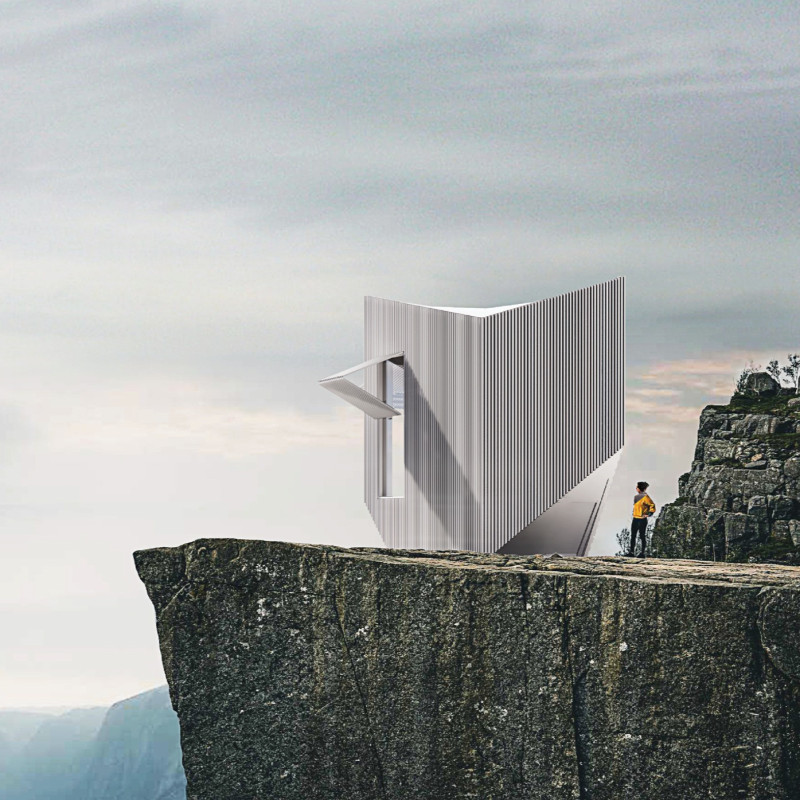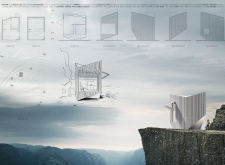5 key facts about this project
The architectural design of the MoveMe cabin is characterized by a combination of simplicity and functionality. Its structure is primarily composed of sustainable timber, which not only contributes to the warm aesthetic but also ensures a minimal environmental footprint. The cabin features large glass openings that foster an extensive interplay between indoor and outdoor environments, allowing natural light to permeate the space while providing unobstructed views of the landscape. The integration of photovoltaic solar panels, a rainwater harvesting system, and an air heat pump demonstrates the project's commitment to renewable energy and ecological efficiency.
This project distinguishes itself from typical architectural designs through its innovative approach to spatial organization and sustainability. The layout includes multiple levels, with the lower level dedicated to essential living amenities and the upper level providing an intimate retreat space. This thoughtful categorization allows users to engage with the cabin in varying ways throughout the day, adapting their use according to needs and preferences.
The MoveMe cabin embodies a modern understanding of responsive architecture. It is designed to adapt to the conditions of its environment, both in terms of functionality and overall aesthetic. The strategic orientation of the cabin, aligned with the contours of the site, minimizes disruption to local ecosystems while maximizing natural resource utilization. This sensitivity to the surrounding landscape is a crucial aspect, setting it apart from other projects that may overlook such considerations.
In its design, the MoveMe cabin emphasizes the principles of sustainable architecture. The use of locally sourced materials complements its environmental objectives, facilitating a low-impact construction process. Additionally, the building’s systems—such as the rainwater filtration and solar energy capture—work harmoniously to ensure that the cabin operates independently from traditional utilities. This self-sufficient model is becoming increasingly relevant in contemporary architectural discourse.
For more insights into the MoveMe cabin and its architectural details, including architectural plans, sections, and design ideas, readers are encouraged to explore the comprehensive project presentation. Understanding how this project integrates architectural principles can offer valuable lessons in sustainable design practices.























